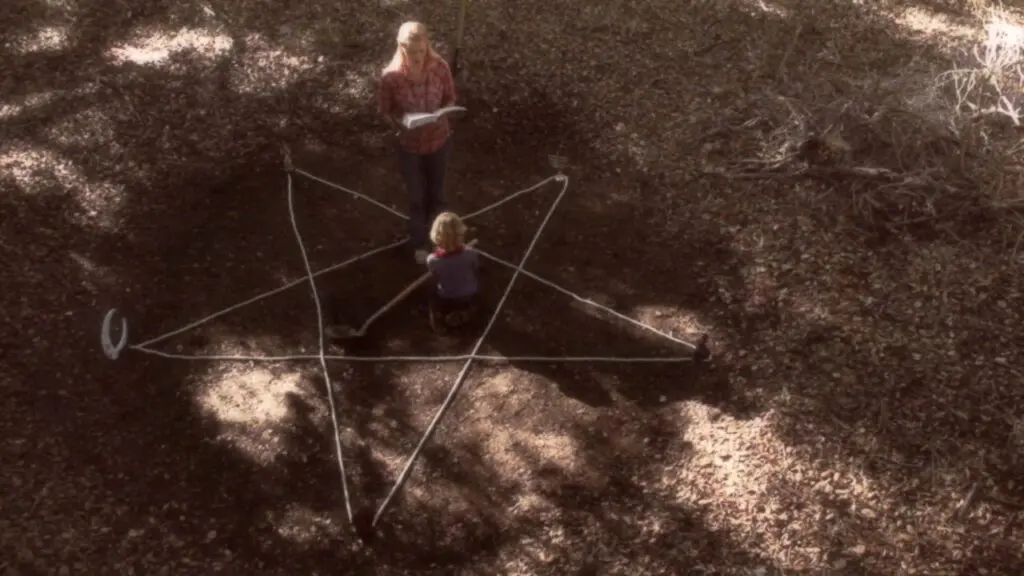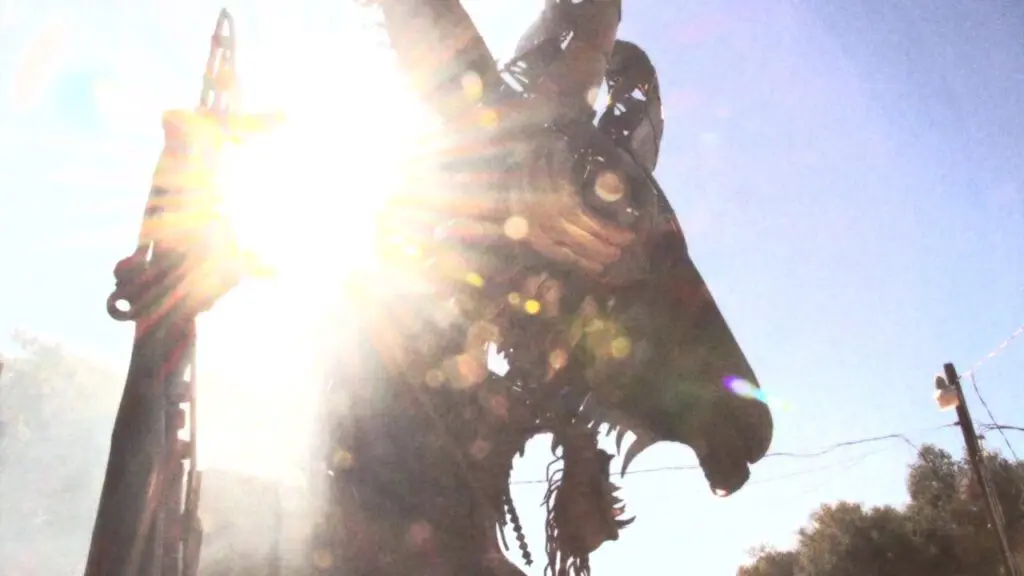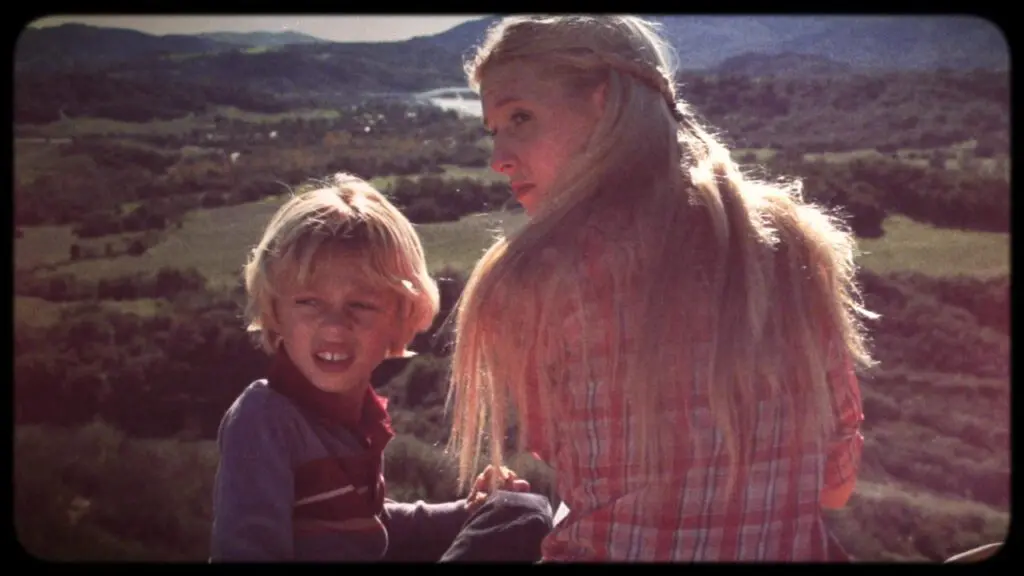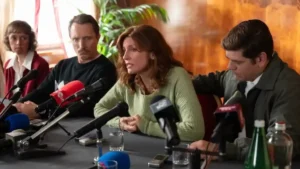Summary
A film from the 1970s about a brother and sister who endeavor to dig a hole into Hell; all wrapped up within a contemporary documentary about this film’s curse. Or at least so it seems.
So… I first watched Antrum: The Deadliest Film Ever Made with the intention of reviewing it three weeks ago, and since then watched it again three more times. It’s hypnotic. At first, my impression was that of a bad, over-ambitious film. But I had to watch it again to check that impression and the impact grew. Perhaps it was actually the right amount of ambitious, and it is a clever film that uses its cheap look to draw you in, fool you, and maybe kill you.
The structure, content, themes, and style all need to be considered together: they were clearly devised together, by a tight-knit group of three (writer/director pair David Amito and Michael Laicini, and composer Alicia Fricker), and that careful blend is what makes Antrum: The Deadliest Film Ever Made ultimately a success. Antrum is essentially a film within a film: the full title refers to the documentary-style commentary which is given before and (a little) after the main film; itself simply called Antrum. (I’m therefore reluctant to shorten the title in this article, other than to refer to the central film, in case of confusing the reader as to which aspect I’m referring to. So I apologize now for the acronym to come.) That central film is – clearly – a horror from the late 1970s, and according to the commentary, when it was shown publicly, many viewers died as the cinema burned down; and there were other deaths and mishaps too. It sounds like the kind of scaremongering that a straight-to-TV documentary might relish: the title gives it that feel too, as does the awful narrator. So while I listened to the interviews about Antrum, and watch the stock footage about the power of hellish imagery during the opening 8 minutes, I naturally assumed that this is all exaggeration: no film – surely! – has the power to kill; there may be examples of this elsewhere in cinema (such as the Cigarette Burns and Ring that are cited in the introduction), but these are fiction. This Antrum has such a strong reputation (or the documentary makers are so keen to sensationalize) that there is even a “legal warning” before the central film starts. By the time it is done, though, it certainly does feel like some low-rent production company has stumbled upon an incantation in the form of a feature film; a film which may have been given layers of power since its initial release with the addition of sigils and the insertion of short, utterly separate and explicit horror clips.

Antrum is the story of teenage Oralee (Nicole Tompkins) and her younger brother Nathan (Rowan Smyth). Nathan believes his recently deceased pet dog Maxine is in Hell (cheers, Mom!) and is suffering nightmares. Oralee takes him to a nearby forest, where they will dig a hole into Hell and set her free; clearly made up to give the poor sod some closure, and they both have the right kind of imagination to make this outing work. While they are there, first Nathan and then both siblings see things which don’t belong in a forest and which mess with Oralee’s plan, and as the film progresses they discover a type of Hell that Oralee has not made up and never would. The scenes the pair encounter are – at first – surreal and dreamlike, and it’s easy to wonder whether they are seeing those things at all. There are many clues about these sights and incidents being related to the occult mythos she has thrown together to give extra weight to what she is telling Nathan, so it kind of suggests that her imagination is bringing weird scenes to life: perhaps there is something mystical about that forest that can make that happen; but the power of storytelling to a) soothe Nathan’s nightmares b) make freaky events appear that wouldn’t normally be there and c) make a cinema spontaneously combust is truly strong in Antrum (and indeed in Antrum: The Deadliest Film Ever Made).
Two factors that add up to make this power plausible are the soundtrack and the way Antrum truly does seem to have come from the late seventies. It wasn’t, of course, released in 1979, lost in scandal and then found by a documentary crew with new bits added: it just looks like that, and it’s brilliantly done. Maksymilian Milczarczyk’s cinematography, along with the sets, clothes, and even the Hartley Hare-style animatronic squirrel all give it the visual style of a Carpenters music video, perhaps given a Deliverance twist. Soft focus, inconsistent exposure, and the odd crackly flicker in the film allow the viewer (yes, me) believe I’m seeing an authentic seventies film and it is so well done that I got over my mental sneering at the cheap documentary pretty quickly. The characters in Antrum belong in that decade too, the siblings and the, um, others. Absolutely nothing gives away that this is a modern construct: it’s so persuasive I was even tempted to avoid mentioning it, but then I couldn’t praise this particular quality. (Actually this is precisely why I haven’t mentioned what other roles the two leads have played: reading those in advance really will ruin the effect.)

None of the filmmaking team behind Antrum: TDFEM has been involved with other full-length films to date; David Amito is usually an actor, Michael Laicini has made remarkably brutal YouTube horror series, Maksymilian Milczarczyk has only been involved with shorts, and Alicia Fricker is a medium. I don’t know whether to take her IMDB bio with as big a pinch of salt as the documentary segments threw at me, but to be fair, without her soundtrack – part folksy, part binaural and all atmospheric – Antrum would not have been anywhere near as effective. Anyway, these four people and their cast truly made an effective team: Antrum: The Deadliest Film Ever Made is a fascinating project, a fascinating watch, and it hasn’t let me go yet.
If you never see another film review by me on this site, it could either be that I’m no longer watching anything else but Antrum. It’s been playing again as I’ve been writing.




